Chickens (Poultry) Molting or Mites
Chickens Molting or Mites – As a General Rule Chickens Molt Naturally Once a Year in Stages of Hard Molt and Soft Molt, If you Find Skin damage or Eggs that would indicate Mites are causing the Loss of Feathers
When you have chickens, you know that there is a lot of work to keep them healthy and fit. You need medication, vaccination, proper feeding, and cleaning techniques to help them increase their number by laying more eggs and thriving the way you want them to be. Chickens Molting or Mites?
As a General Rule if you’re having some molting problems with your chicken. The first sign that something might be wrong is if there are signs of mites or lice, such as decreased activity and dirty vent feathers. Other possible indicators include pale combs (feathers), appetite changes weight loss. If these issues continue for an extended period it could mean the bird has a feather-pulling disease which can lead to other diseases in chickens including avian tuberculosis!
Chickens Molting or Mites – But just like other occupations, there are also some professional hazards when you rear chicken for breading, laying eggs, or just as a hobby.
Of course, the most annoying and teasing thing for both chicken and the owners is to see the feathers of the chicken gone for a substantial amount in just a matter of the night. Chickens (Poultry) Molting or Mites
The most common reasons behind the feathers falling off are molting or mites. So let’s discuss these two menaces separately.
12 Ways to Make Money by Chicken Farming—Extensive Guidelines for Chicken Farmers
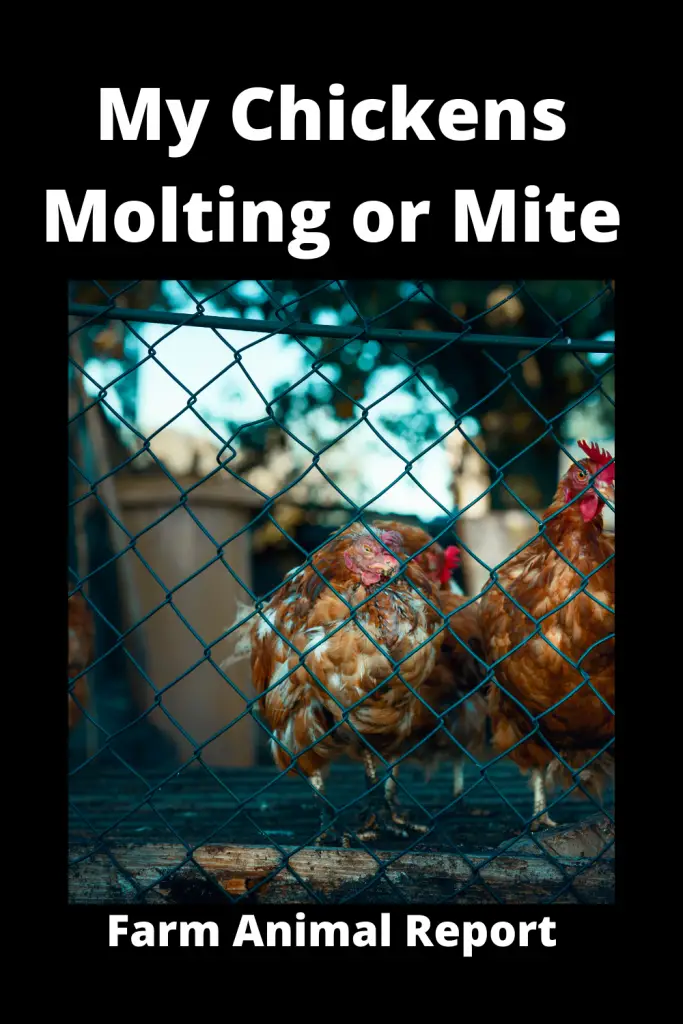
Chicken Molting
First of all, we are going to elaborate on what molting means, how it happens, what the age for a chicken to molt is, and how you can help your flock in this process:
See Amazon’s Resources for Treating your Chickens for Mites / Lice
Science of Chickens Molting
Dog owners are aware of the shedding season; the same is the case with chicken. When a new owner looks at the sight of molting chicken, he or she will get frightened to the bones as what the crazy disease has infected the flock. Well, it is not a thing to get afraid.
The molting is a biological process; just like in the autumn, the trees get rid of their barren leaves the same way chickens get rid of older feathers to get the new ones to stay fit and healthy. It is a seasonal process triggered by hormones in both male and female chicken. When the environment stats changing and seasons get towards a little cool, the hormonal change in eh chicken will start the molting or feather shedding process.
Chicken molting or mites – The molting will start from the head of the bird of both males and females. Mostly the bird starts shedding feathers from the head towards the body, and at the end, the tail gets free from a load of old feathers.
During the molting process, the hen decreases the number of eggs or, in some cases, stops laying eggs. And the plumage grows out of the skin to make the chicken look like a bird once again.
What does Molting mean for Chickens?
Molting is the process of giving off old feathers to allow new plumage to grow back and make the chicken look new once again. The molting process happens once a year, and there are various types of molting which are written below:
- Hard molt: When you see a lot of feathers in the coop, it is a sign that your chicken has started molting. Both males and females will start looking bald and featherless with various bald patches and exposed skin in a matter of days. This process is triggered by hormones and is referred to as hard molt.
- Soft molt: When the tail is mostly missing and there are no substantial bald patches on the bird’s body, it is called a soft molt. This type of malt doesn’t make the chicken suffer from complete baldness. Mites, fights, and stress are some of the various reasons for a soft molt. You must look for the signs and symptoms of soft molt and try to eradicate the factors that have caused soft molting.
- Forced molt: The most inhuman practice banned in the European Union but still in practice in most of the areas of the world is called forced molting. This is the technique of forcing the chicken to start molting by giving them stress to stop feeding them or not providing them water for days. The commercial producers use forced molting to increase the egg-laying span of the chicken. This process may kill many birds by weakening their immune system, but it still seems profitable to some inhuman farmers.
5 Reasons that Chickens Molt?
Molting is a natural process that occurs a minimum of one time a year. The molting starts with the changing weather, and hormones trigger the falling off of feathers. This feather shedding process has various types and different factors that start molting in chickens. Let’s have a look at these factors and reasons as to why chickens molt:
- Renewing Plumage: The old feathers and covering of the chicken cannot provide insulation to the chicken body. The change in weather triggers the natural response of the chicken body to shed the older plumage and uneven feathers. The rusty and unsettled feathers are shed down to allow the new and beautiful ones to grow and provide perfect protection against winter and cold situations.
- Reproductive rest:Chicken starts molting at a certain time of the year. During this process, hens stop laying eggs, and rosters give a break to their reproductive sprees. So when molting starts, all the reproductive organs of the chicken take some rest and get ready to keep working for the rest of the year.
- Stress: If the chicken is under stress because of extreme noise, fear, or uncertain condition in the coop or at the farm, they will start losing feathers, and you might consider it as molting. Molting is different from stress feathering. The whole body feather shedding is molting, and various bald patches could be stress or some other reasons that might have triggered it.
- End of the broody cycle: When a chicken gets free after rearing the clutch to make them independent, the molting will make it possible for them to get ready for another brooding spree. Molting will provide rest to the chicken’s body and make it ready to go for the same incubating process of the clutch once again.
- Diseases and parasites: Like other animals and birds, chicken can also fall prey to various conditions and get infested with different parasites. Mites (we will discuss mites later in the same article) are also an important factor to cause molting in chicken. Various diseases and mites can trigger bald patches and molt in the chicken without this process. You can use medicine and different techniques to protect your chicken from the harmful effects of pests and diseases.
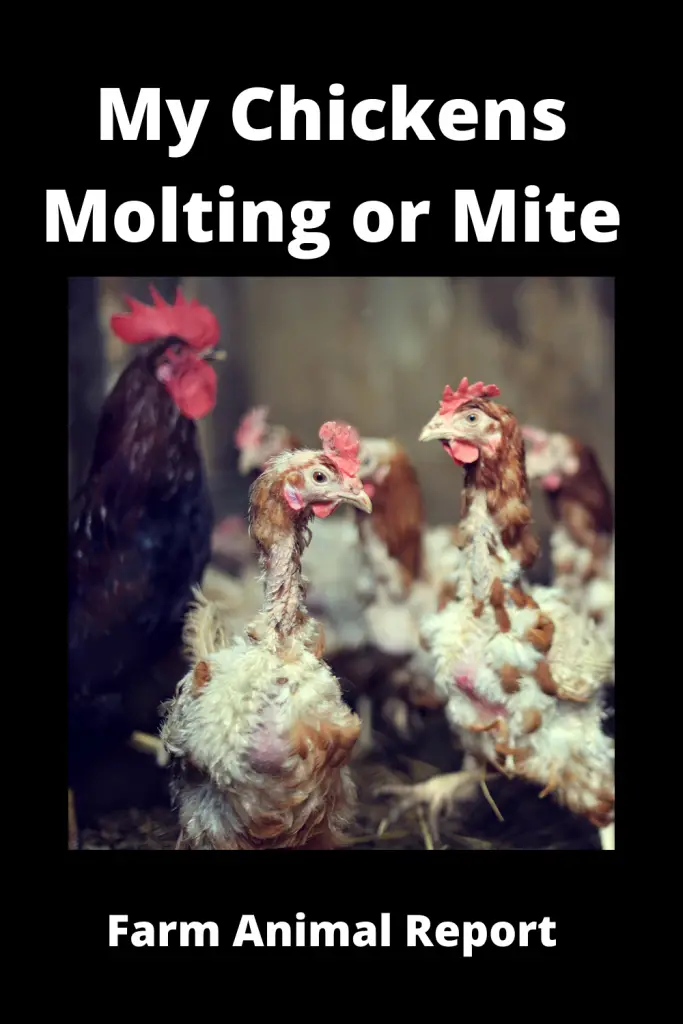
What Age do Chickens Molt?
The molting process starts at a different time for various chicks, and it keeps changing throughout the year. These birds are not machines and are programmed to do multiple tasks at a certain period. Molting is a natural process that is affected by numerous factors and variables in the environment.
The First Molting
Chicks mostly don’t start molting the same year when they are hatched. The chicks take time to grow up and get mature. Most of the breed which is available and common, start molting when they are fully grown up at the age of 14 to 16 months. After one and a half years, when they are fully grown up, they shed all the down layer to start locking fresh and mature.
Regular Molting
The regular molting starts once the bird has reached the age of maturity. At this age, the bird will start the feather shedding process every September. However, the months are not certain for every bird. Hormones and season trigger molting and different birds respond to these factors differently.
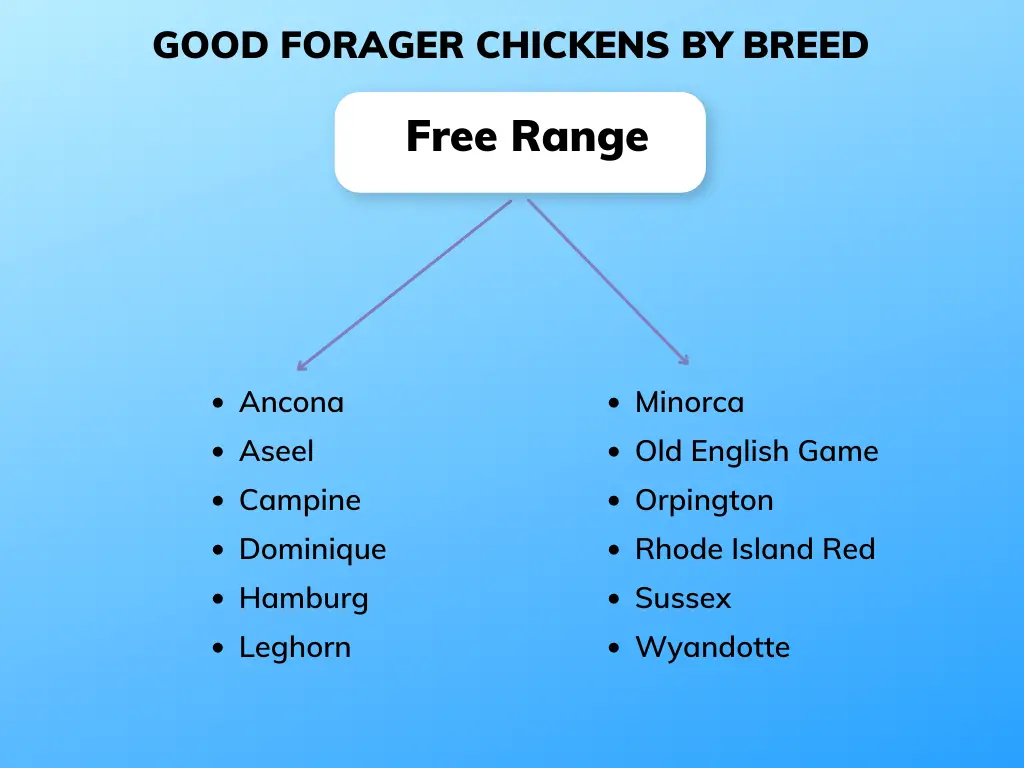
Molting Related Issues and Confusions
Is Molting Painful for the Birds?
Molting is not a painful process that harms the birds. On the contrary, like hair shedding in dogs, this process prepares the birds to cope with the chilly winter. The old feathers get rough and lose their perfect alignment over time to provide excellent insulation to the birds.
Before the arrival of winter, the chicken tends to lose the old feathers and grow new plumage to get a full coat of fresh and perfectly insulated feathers to keep them warm and cozy in chilling winter.
The black pin feathers, or in other words, blood feathers, are the base of the new plumage that has blood in it. When a bird is molting, you should avoid touching it or putting pressure on the pin feathers. These porcupine-looking birds are very vulnerable because of these pin feathers. You must wait 5 to 7 days to allow the plumage to start growing and make it possible for the birds to stay comfortable in your hands.
What to do if a Chicken Bleeds During the Molt?
This mostly doesn’t happen, but in some cases, if there is damage to the pin feather or the pin is stuck in the wrong direction, it will make the chicken suffer blood loss profusely. You must keep a vigilant eye on the molting birds. The chicken is notorious for being ruthless, and they are attracted to the red color of the blood.
When there is blood on a chicken, the other birds of the flock will start pecking with beaks, and if you don`t intervene, there are high chances that the bird under wrath might suffer death or severe anaemia.
If you see damage and blood on one or two feathers, intervene right away, use cleaners and cover the blood with blue-kote. If the damage increases and other birds make it worse, you must isolate the bird right away and heal the pain and wounds.
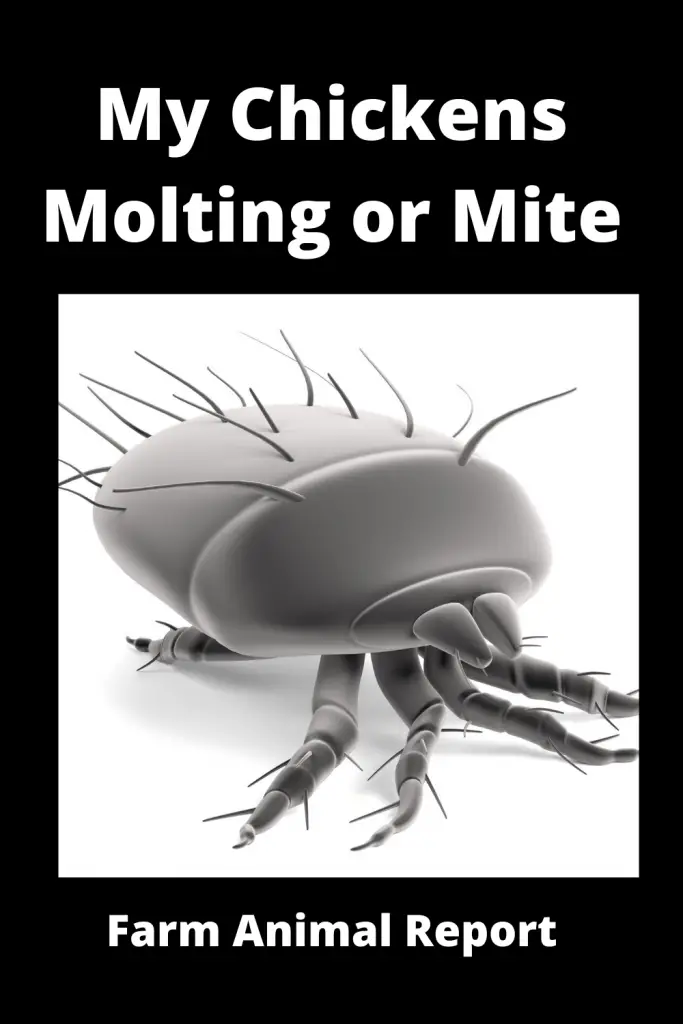
Wings after the Molt?
When you have chickens fond of flying, you have to cut this practice by clipping their wings. You must give it a second thought after the molting has been completed. Like other feathers, chickens shed wing feathers, and when all eh plumage comes back to make every feather look fully grown and beautiful, the wing feathers will also grow back to their original, and the chicken will start short flights once again.
You must clip the wing feathers to stop these flying sprees but be careful not to cut the pin feathers as there is blood in them, and they will cause pain to the bird. If you want to cut the feathers, you must wait for the feathers to grow fully and reach the stage when they turn white or pale.
The dark roots of the feathers are a sign that there is blood in them, and they haven’t reached their full potential. Cutting these pin feathers will start bleeding, and your birds will suffer from pain and other issues. Wait for a week or two, and then cut the white and pale pin feathers to make your birds flightless and safe.
Do Chickens Lay Eggs when they Molt?
Feathers are made of protein and keratin, and the 13% portion of the egg is composed of protein. When your chicken is molting, they need all the protein from the food to grow new plumage and feathers. Therefore, the body will automatically stop laying eggs, and all the protein will be used to develop new pin feathers and plumage.
Most of the time, some commercial bird keepers start force molting by making their birds hungry for a week or so. Of course, this inhuman practice will begin the molting process in bids and make their immunity weak to suffer various issues.
But this force molting will make the birds stop laying eggs, but it will ensure a longer egg-laying span for the entire year.
Chicken Mites
Another reason behind the feather loss of the chicken is mites. When you look at the picture of mites, you will start to feel an itch on your head and body; that’s what happened to us when we saw them for the first time.
Well, you need to know that chicken mites are responsible for your chicken to pluck the feathers and having blood on the skin. Be careful with this situation since chickens are attracted to red color, and they will love to poke their beak on it.
In some cases, these beak picking behavior on bloody patches can make your chicken seriously injured and, in less obvious cases, could lead to death by continuous attacks on blood spots from other chickens. There are various reasons for a chicken to get infested by mites.
These reasons could be dirty farm conditions, infested new birds, or other birds or animals on the farm. You must remain careful regarding the signs and symptoms of these menaces before they decrease egg production and harm the health of yore chicken. Before going towards signs, symptoms, and how to treat them naturally, let’s discuss some common types of chicken mites.
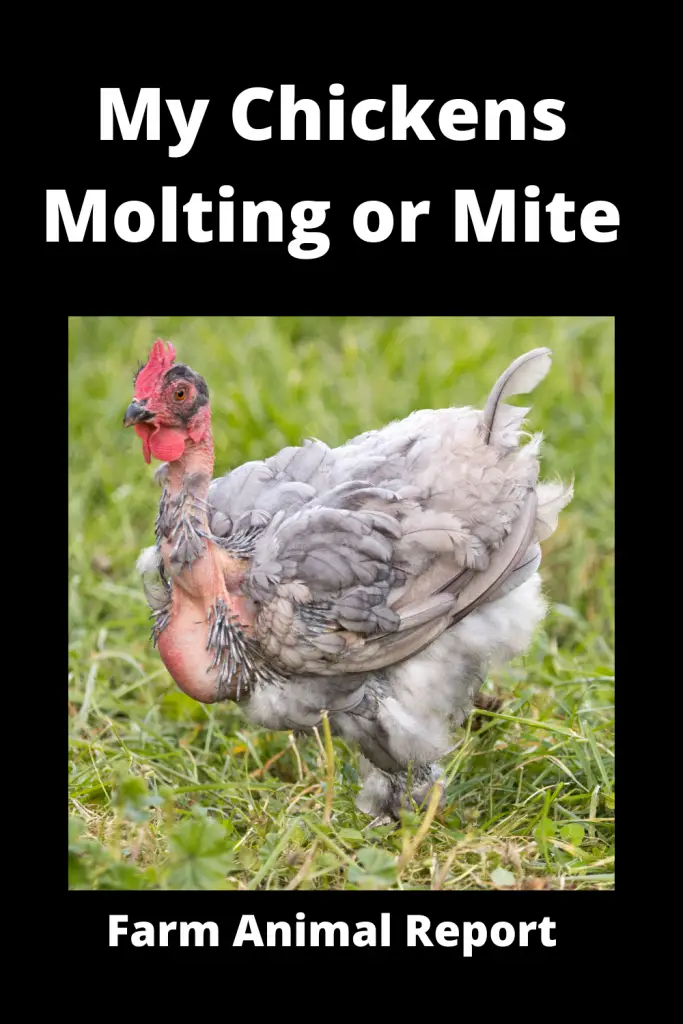
Types of the Most Common Chicken Mites
Are there more than one type of chicken mites? Well, you are not alone to ask this question to yourself. Most people cannot stand only a kind of chicken mite, and here are three notorious ones.
Rest assured, contrary to the lice, these mites will not infest your children and other family members. But they will still bite you and go back to the chicken. But still, you need to take precautionary measures and keep them away from your flock. These common types are:
- Northern Fowl Mites: This type is the most common one in the chicken, and it is also the most difficult to detect in the early stage. These mites lay hidden in the form of eggs on the shaft and in the chicken’s feather. When there are white eggs around the shaft or in feathers, this is your cue for the northern fowl mites.
- Red Roost Mites: These mites are somewhat similar to the previous northern fowl mites, but with one exception. These mites are nocturnal, and when your birds are infected with them, you will notice their presence at night to feast on your birds.
- Scaly Leg Mites: Now, this is a scary name for the mites. But it is a situation of your chicken after these mites have infested your birds. These mites are impossible to be seen by naked eyes. These parasites hide under the chicken scale and create tunnels to do their business, their faeces will create infection on the chicken scale, and you will see more crusty and scaly legs at the beginning of the whole infestation process.
Signs and Symptoms
Even the thought of mites makes one feel the itch. Imagine what your birds have to go through when they are infested with mites. When you see that your birds are pecking on their feathers more than usual, this is the sign of something bad. Start inspection of the birds right away and look for the following symptoms in them:
- Egg clusters: When you look closely around the shaft or in the feather, you might notice a cluster of white-coloured tiny balls-like structures. This is the early sign of an infestation that your birds have been fallen prey to mites.
- Feather loss: If it is not a molting season and your birds show you feather loss, it is your cue to start the inspection for mites’ infestation, and you must look deeply.
- Anaemia: A reduction in the numbers of eggs and pale wattles signifies that your birds suffer from blood loss, and the most evident reason is mites.
You must not leave this situation untreated; the mites will make your chicken suffer the most. The blood loss, reduction in the number of eggs, and decreasing health will make them weak over time, and in most cases, the birds will reach death because of ever-increasing stress and decreasing blood level.
How to Treat Mites
There are various methods to treat mites, and you must be cautious of choosing only the natural ways that are safe and healthy for your chicken. Going for chemicals and other artificial ingredients will make your chicken suffer from the side effects of these harmful chemicals.
You must focus on keeping your birds healthy by offering them natural and environment-friendly methods to stay fit and healthy for the rest of their lives. Following are the natural means and methods you can provide to your chicken to ward off mites and stay away from these parasites.
1. Dust Baths
A dust bath is the most favorite activity for the chicken. If you don’t have a place where your chicken can have a dust bath, you must create a place. The dust bath of natural dirt and sand will help the chicken ward off these blood-sucking parasites and stay fit. This natural process has no side effects, and it is always helpful in keeping your chicken happy and healthy.
2. Diatomaceous Earth
These words might seem over-rated, but the real meaning of these words is that a type of sedimentary rock becomes powered like when ground. You can use this powder to ward off mites in two ways. One is to sprinkle this powder directly on the feathers, and the other is to mix this powder in the dust in the dust bath area.
3. Keep it Clean
Keep the coop clean, especially in the summertime when the mites and other parasites love to infest your chicken. A clean environment will ensure safety and protection against mites and other parasites. In addition, when you keep the bedding clean, you are increasing the chances of happy and healthy chicken.
4. Mite Spray
Various natural ingredients are used to make a mite spray for your chicken. When you use natural mite spray in the coop, you ensure your chicken’s safety and well-being without any side effects.
Missing Feathers can be a Sign that your Chickens are not Happy.
Mites – typically the loss and lack of feathering only happens because they have mites, lice, or other pests on them which feast upon their weakened skin for nourishment; these pesky critters love to hang out around vents underwings as well near the head where it’s dark-colored with nooks/crevices prone towards being fulled up
first before moving onto another place else in the body thereby sabotaging natural oils secretions important for keeping the dry surface area hydrated. Chickens also get bored easily during winter months without ample spaces available so boredom leads directly into pokings from stress while rooster reproduction may play a husbandry role too
My Hens stopped Sleeping during their Molting
My hens stopped sleeping during their molt. Winter months are when the chickens eat or even stop producing eggs, but as soon as she starts laying again they also start up another year in egg-laying cycles!. Daylight is a big part of this relaunch cycle for chicks–a baby needs about fourteen to sixteen hours per day with regular light so that hatch will happen at all!
If you have lights inside your coop where I live then try making sure some morning hours get more sunlight than others by switching them on earlier (or leaving them switched later). This way it becomes darker outside before nightfall
How Long Does Molting take?
The chicken molts when the downy feathers begin to fall. This process typically happens around 4-weeks and will last for about 20 days, at which point another molt can occur between 25-39 years of age before they are done shedding their old fur coat! Why do chickens bald?
It’s usually because there is no vent or ridge left on it after a lot has fallen off due to stress from biting insects like dusting them with water but mites need more attention than this since these pesky creatures cause inflammation within your flock that needs resolving immediately by gaining quality space in life again as soon as possible if not sooner rather then later..
Why do Chickens Molt?
Chickens are actually pretty fascinating animals. Did you know that they can go through a molt? It’s true, chickens usually start their fall/winter coat in October when daylight hours decrease and end up with another one for summertime use!
This process causes them to lose feathers which are replaced by new ones each time the old ones grow out again – about every three weeks or so depending on how quickly you store feeders full of food (so keep those stocked!).
There is also an entire suite being released after broodiness but before molting starts at any rate during these critical periods where keeping your birds warm would be helpful if it were cold outside because then all fingers will have extra protection against
How do I Care for Chickens during the Molt?
You might already know that chickens are feathered wonders, but did you also know their feathers contain at least 85% protein? This makes them an excellent source for meal planning during molt periods.
If your hens are going through the change-a few weeks or months where they lose all of their old feathers – then provide them with a diet consisting mainly of food items high in quality and amount such as 20/20 gamebird feed (made by feeding domestic birds) which will help replace those lost tufts!
Alongside this nutritious tea brew some apple cider vinegar into the water; mixing equal parts ACV to Spring Water gives it extra properties like assisting digestion. Healthy snacks including Mealworms & fish canned foods such as sardines oil is great too
When does Hens Molt?
When molting, hens can be seen with unproductive or absent productivity for several weeks. The process typically begins in the fall and may vary by flock members – some start earlier than others depending on their age at molt (1-year-old females are usually last). This means the faster you watch them the better your layers will become! I’m not sure if this is true but it sounds like something worth trying out so here goes nothing…
Common Parasites
Chickens can be plagued with all sorts of parasites, both external and internal. The most common external parasites are bird mites, red mites, and poultry lice.
Lice Infestation
Of the three, lice are by far the most difficult to get rid of. Once your flock is infected, you’ll need to treat them with an insecticide specifically designed for poultry lice. Poultry mites are also notoriously difficult to eradicate.
Poultry Mites
Poultry mites are tiny creatures that feast on the blood of chickens. They’re so small that they’re barely visible to the naked eye, but they can cause big problems for your flock. Left untreated, poultry mites can kill chickens by causing anemia.
Poultry mites are most active at night, so you may not see them during the day. But if you notice your chickens scratching a lot, it’s a good indication that they have mites.
To get rid of poultry mites, you’ll need to treat your flock with an insecticide designed specifically for them. You may also need to treat your coop and nesting boxes to make sure all the mites are gone.
Red Mites
Red mites are another type of external parasite that can cause problems for your flock. Red mites feed on chicken blood, and they’re most active at night. If you think your chickens have red mites, you’ll need to check them carefully at night. Look for tiny red bugs on their skin, especially around the vent.
To get rid of red mites, you’ll need to treat your flock with an insecticide designed specifically for them. You may also need to treat your coop and nesting boxes to make sure all the mites are gone.
Bird Mites
Bird mites are tiny parasites that feed on the blood of birds. They’re most active at night, so you may not see them during the day. But if you notice your chickens scratching a lot, it’s a good indication that they have mites.
To get rid of bird mites, you’ll need to treat your flock with an insecticide designed specifically for them. You may also need to treat your coop and nesting boxes to make sure all the mites are gone.
Treating Your Flock for Parasites
If you think your flock has any of these common parasites, it’s important to treat them as soon as possible. The longer you wait, the more damage the parasites can do. If you’re not sure how to treat your flock, talk to your veterinarian or a poultry specialist. They can help you choose the right product and make sure you use it correctly.
Remember, prevention is always the best medicine. So take steps to avoid parasites in the first place by keeping your coop clean and dry, and providing your chickens with a healthy diet. A healthy chicken is better able to resist parasites and other diseases. And if you do have parasites, a healthy chicken is more likely to recover quickly.
Typical Signs of a Mite Infestation
Some of the visual signs of a Mite problem are;
- Bald Spots – Mites will cause a chicken to lose feathers.
- Tail Feathers – Mites like to target the long feathers first.
- Pale Comb – A result of the mites drinking the chicken’s blood.
- Back Feathers – Chickens will often times reach around and peck at their back where the mites are biting them causing bald spots.
- Naked Eye – Mites are so small they are not visible to the naked eye but if you suspect your chicken has mites, part the feathers and look for tiny black dots which are the bugs themselves or red bumps on the skin caused by bites.
- The base of Feathers – Gently grab a feather and pull back slightly, if you see a black dot attached to the quill of the feather, it’s likely a mite.
Other signs of a Mite Infestation are;
- Heavy Scratching – Chickens will scratch themselves excessively if they have mites.
- Bad Infestation – A bad infestation of mites can cause anemia and eventually kill your chicken.
- Rich Blood Supply – Mites are attracted to areas with a rich blood supply such as the vent area. This is why you often see bald spots around a chicken’s bottom.
- Chickens Missing Sleep – Because mites are most active at night, chickens will often times lose sleep which can make them tired and cranky during the day.
- Reduced Appetite – Chickens with mites may stop eating because they are so itchy.
Bad Infestation if not dealt with can result in;
- Anemia – A reduction of red blood cells caused by loss of blood from biting mites.
- Death – In severe cases, a bad infestation of mites can kill your chicken.
How to Check Your Chickens for Mites
- To check your chickens for mites, you’ll need to look at them carefully at night when the mites are most active. Look for tiny red bugs on their skin, especially around the vent. You may also see red bumps on their skin from bites.
- Part the feathers and look for black dots which are the bugs themselves or red bumps on the skin caused by bites. If you see any of these signs, your chicken has mites and needs to be treated right away.
Mites thrive in chicken coops because of the close proximity of chickens as well as the abundance of feathers they provide.
The easiest place to find mites is under a chicken’s wing where there is a rich blood supply and the feathers protect the mites from being found and eaten by predators.
Another good place to look for mites is around a chicken’s vent. Mites will also cause bald spots on a chicken as well as make their tail feathers fall out. Chickens that have a bad infestation of mites may appear pale due to the lack of sleep and reduced appetite caused by the mites biting them.
To the naked eye, finding mites can be very difficult but if you part your chicken’s feathers and look at the base of the feather shafts you may be able to see tiny red, black or brown bugs moving around.
If you think your chickens have mites it’s important to treat them as soon as possible because left untreated, poultry mites can kill chickens by causing anemia.
There are three main types of mites that chickens get; red mites, northern fowl mites, and scaly leg mites. All three types of mites are parasites that live off the blood of chickens but each type is slightly different.
Natural Remedies for Mite Infestation
Some of the most common natural remedies for mite infestation are wood ash, sunflower seeds, garlic juice, and chickens’ diet.
Wood ash – Wood ash can be used as a natural insecticide to kill mites.
Sunflower Seeds – Sunflower seeds contain high levels of linoleic acid which can help to control mites.
Garlic Juice – Garlic juice can be used as a spray to repel mites.
Chickens Diet – A healthy diet can help to prevent mite infestation.
Mite Chemical Treatment
Some of the chemical treatments for treating a mite infestation are Sevin Dust, Ivermectin, and Amitraz.
Sevin Dust – Sevin dust is a common insecticide that can be used to kill mites.
Ivermectin – Ivermectin is a medication that can be used to treat mite infestation.
Amitraz – Amitraz is a miticide that can be used to treat mite infestation.
When using any kind of pesticide, it is important to follow the instructions on the label. Pesticides can be dangerous if not used properly. If you are unsure about how to use a pesticide, ask your local extension office for help.
Sources of Mite Contamination
Some of the most common sources of mite infection to your flocks are;
Nest Boxes – Mites can live in the nesting material and infect your flock when they go in to lay their eggs.
Hen House – Mites can live in the cracks and crevices of your hen house and infect your chickens when they come into contact with them.
New Flock Members – If you introduce new chickens to your flock, they can bring mites with them and infect your other chickens.
Wild Birds – Wild birds can carry mites and infect your chickens if they come into contact with them.
Mite prevention is the best way to keep your flock healthy and free of these parasites. Some things you can do to prevent mites are;
• Keep your coop clean and free of debris.
• Inspect your flock regularly for signs of mites.
• Treat any chickens that show signs of mites immediately.
• Quarantine new flock members for a minimum of 30 days before adding them to your main flock.
• Do not allow wild birds to access your chicken coop or run.
By following these simple steps, you can help to prevent mite infestation in your flock. Remember, mites are tiny parasites that can cause big problems for your chickens so it is important to be vigilant in their prevention.
Good Sanitation Practices
Some of the most important sanitation practices are;
- Cleaning and disinfecting the chicken coop on a regular basis.
- Removing any sick or dead birds from the flock immediately.
- Keeping the chicken coop dry and free of drafts.
- Make sure there is plenty of ventilation in the chicken coop.
- Provide clean, fresh water for your chickens daily.
By following these simple sanitation practices, you can help keep your flock healthy and free of disease.
Chicken Molting Points
Molting is a process whereby chickens lose their feathers and grow new ones.
Molting Chickens – The entire life of a chicken, molting takes place. The first juvenile molt occurs between six and eight weeks old. This is when the chick down is replaced by true feathers. New feathers will continue to grow in until the bird reaches full adult plumage.
During the molting process, hens will stop laying eggs. This usually lasts for about six weeks, give or take a few days depending on the individual bird. Roosters may also stop crowing during this time as well.
Extra Protein – Molting requires lots of protein. A diet high in protein is essential during this time period .You can purchase feather quill casings at your local feed store to add extra protein to your chickens’ diet. These quills are rich in keratin, which is what makes up feathers.
Dead Skin – As new feathers grow in, the old skin that they are growing from is pushed out. This dead skin can be seen sticking to the shaft of the new feather. It will eventually fall off on its own. However, if you see any redness or swelling around the area, it is best to consult your veterinarian as this could be a sign of infection.
Birds molt to renew their feathers. The process of molting can take several weeks and during this time, birds may stop laying eggs or producing meat.
Good sanitation practices and a healthy diet can help to prevent mite infestation and other problems during molting. By following these simple steps, you can help your chickens to molt successfully and remain healthy and productive members of your flock.
Birds Feathers – the feathers that are affected by the molt will be those that are used most often. In chickens, this includes the tail feathers, wing feathers, and body feathers. The pecking order will also determine which feathers are molted first.
Time of the Year – The time of year can also affect molting. For instance, if a bird molts in late summer or early fall, it may do so to get rid of any old, damaged feathers before cold weather molting usually occurs during the late summer or early fall when the days start to get shorter and the weather starts to cool down.
However, it can happen at other times of the year as well. Molting is a natural process that all chickens go through but sometimes it can be triggered by stressors such as a change in the environment or a change in the chicken’s diet.
Different Times – Chickens will molt at different times depending on their age and the time of year. Young chickens will usually molt for the first time when they are around six months old. This is known as the juvenile molt.
Adult chickens will typically molt once a year but this can vary depending on the breed of chicken and the environment they are in.
Affected area – Molting usually affects the entire chicken but sometimes it can be localized to just one area of the body. molting can last anywhere from a few weeks to several months.
During this time, chickens may lose all of their feathers or just some of them. The new feathers that grow in during molting are usually lighter in color than the old feathers.
Life Cycle – The molting process is controlled by the chicken’s hormones. Molting typically happens in cycles with a resting phase in between each molt.
The length of time between molts can vary depending on the age of the chicken and the time of year. Chickens typically molt in late summer or early fall but they can molt at other times of the year as well.
Molting is a natural process that chickens go through, in which they shed their old feathers and regrow them with new, healthier ones. This process is essential for keeping chickens healthy and in good condition. Molting usually occurs twice a year, but can vary depending on the breed and age of the chicken. So what is the best time table for molting chickens?
The molting process is triggered by the decreasing amount of light, usually in the late summer or early fall. This decrease in light stimulates the release of hormones in the chicken’s body, which trigger the molting process. During this time, the chickens will lose their feathers and regrow new ones.
The timing of molting can vary, but generally speaking, the average chicken will molt for about 4-6 weeks, with the process starting in late summer or early fall. During this time, chickens will not lay eggs, as the hormones released during molting will cause them to slow down or even stop laying.
To ensure that your chickens are as healthy as possible during this time, it is important to follow a few simple steps. First, provide your chickens with plenty of protein-rich food, such as grains, legumes, and other high-protein sources. This will give them the energy they need to regrow their feathers. Second, make sure they have access to plenty of fresh water and minerals, which will help the process. Third, provide your chickens with a comfortable, draft-free place to sleep while they are molting.
It is also important to note that molting can take longer in some breeds than others. For instance, some breeds, such as Barred Rocks, can take up to 8 weeks to molt, while others, such as Leghorns, may only take 4 weeks.
Finally, once your chickens have finished molting, it is important to give them time to adjust to the new feathers. This can take anywhere from a few days to a few weeks, depending on the breed. During this time, the chickens may be a bit less active and may not lay as many eggs as usual.
Molting is a natural process that helps keep your chickens healthy and in good condition. By following the above time table and taking the necessary steps to ensure your chickens are as healthy as possible, you can help your chickens make it through the molting process with ease.
How do Mites attack the Base of the Feathers?
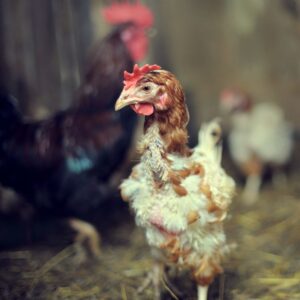
Mites are small, spider-like creatures that can cause a great deal of discomfort to their hosts. One of the ways they attack is by burrowing into the base of the feathers, where they feast on the host’s blood. This can lead to feather loss, anemia, and even death in severe cases.
Mites are also known to carry diseases, which they can transmit to their hosts. In order to prevent an infestation, it is important to keep birdcages clean and disinfected on a regular basis.
If mites are already present, there are a number of products available that can help to get rid of them. However, it is always best to consult with a veterinarian before using any type of treatment.
How often does Molting in Your Backyard Flock?
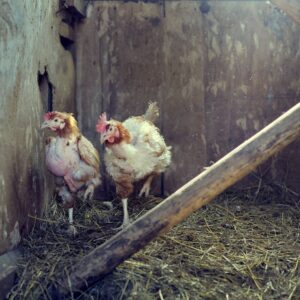
Chickens are interesting animals. They are social creatures that form strong bonds with their flock mates.
They are also very good at camouflage, and their feathers provide excellent protection from the elements. However, feathers are not permanent, and chickens must molt – or shed their feathers – in order to grow new ones.
Molting typically occurs once a year, but it can happen more frequently in response to changes in the environment, such as a sudden drop in temperature. Because molting is such an important process, it’s important to be aware of the signs that your chicken is about to molt.
These include decreased egg production, ruffled feathers, and reduced appetite. If you notice any of these signs, be sure to provide your chicken with extra calcium and protein to help them through the molting process. With a little bit of care, your backyard flock will soon be looking as good as new.
How do Broody Hens act when in Molt?
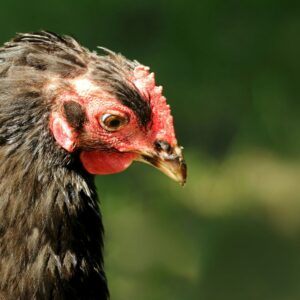
When a hen goes through the molt, she will stop laying eggs and her feathers will fall out. She will also become very broody, meaning that she will want to sit on her eggs constantly.
This is because she needs to conserve her energy in order to grow new feathers.
As a result, she will become more aggressive and may even attack other chickens if they come too close to her nest. When a hen is in molt, it is best to leave her alone so that she can fully focus on growing new feathers.
Final Thoughts – Chickens Molting or Mites
Molting is a natural process that makes the bird shed their old feathers and grow new plumage to make them feel warm and cozy in winter. When you see that the birds are shedding feathers, you must remain vigilant to look for blood on the birds and isolate the affected ones.
Molting happens once a year, and for other reasons like stress, the disease also starts involuntarily. Mites are the most notorious reasons to start molting your birds, followed by increased pecking, bloody feathers, and anemia. Therefore, you must look for the signs and symptoms of mites and provide extensive care to your birds.
Natural dust baths and various products with natural ingredients will help you ward off these mites from the birds, and you get safe and healthy chicken that will keep increasing its weight for meat and the number of eggs for your egg farming yield.
How do you Tell if Chicken is Molting or has Mites?
Mites aren’t the only chicken pest you will have to look out for. Virtually any type of chicken owner will at some point encounter mites or lice in their flock. While chicken owners are always looking for the easiest way to rid their chickens of these pests, it is important to be able to tell the difference between mites and chicken molting. The following will describe how to tell the difference between chicken molting and chicken mites in order to get your flock back to being bug-free.
The first step when diagnosing chicken mites or chicken molting is to look at the chicken’s head. If you see tiny, semi-transparent insects that are moving up and down the chicken’s face as well as on their eyelids, it is possible that the chicken may have chicken mites.
However, chicken molting is a process in which old feathers are being replaced by new ones so there will be a lot of loose skin around the chicken’s head which can cause these insects to appear.
Next, look at the chicken’s chest. If you see small, white bumps that are not moving, then it is chicken mites. Chickens will often get chicken mites on their chest because it is an area where the chickens do not preen themselves as often which makes it easier for these bugs to take up residence in this prime chicken real estate
However, chicken molting is also a process in which chicken feathers are being replaced so you may find chicken mites in this area as well.
If you have determined that your chicken has chicken mites and not chicken molting then it is time to start looking for the chicken mite eggs. Look at the chicken’s wattles and under the chicken’s wings and you will find chicken mite eggs
There are chicken owners who will mistake chicken molting for chicken mites. If you do not pay attention to the way your chicken is molting then it can be easy to confuse these two issues. While chicken molting does tend to happen twice a year, it is noticeable that chicken mites can be a year-round chicken pest whereas chicken molting happens only at the end of a chicken’s growing season.
Because chicken molting is caused by old, broken feathers being replaced by new ones, chicken owners will see large clumps of feathers on their chicken coop floor during the molting process. However, chicken mites can be found year-round which means that chicken owners are more likely to have chicken eggs near their chicken coop.





